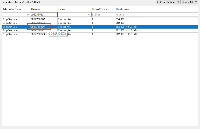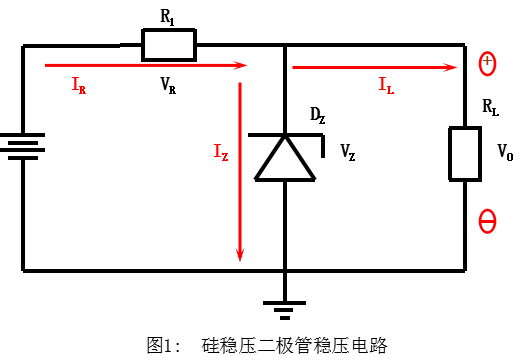blog.csdn.net/mycs2012/article/details/90898128
1 FastThreadLocal的引入背景和原理簡介既然jdk已經有ThreadLocal,為何netty還要自己造個FastThreadLocal?FastThreadLocal快在哪里?
這需要從jdk ThreadLocal的本身說起。如下圖:
在java線程中,每個線程都有一個ThreadLocalMap實例變量(如果不使用ThreadLocal,不會創建這個Map,一個線程第一次訪問某個ThreadLocal變量時,才會創建)。
該Map是使用線性探測的方式解決hash沖突的問題,如果沒有找到空閑的slot,就不斷往后嘗試,直到找到一個空閑的位置,插入entry,這種方式在經常遇到hash沖突時,影響效率。
FastThreadLocal(下文簡稱ftl)直接使用數組避免了hash沖突的發生,具體做法是:每一個FastThreadLocal實例創建時,分配一個下標index;分配index使用AtomicInteger實現,每個FastThreadLocal都能獲取到一個不重復的下標。
當調用ftl.get()方法獲取值時,直接從數組獲取返回,如return array[index],如下圖:
2 實現源碼分析根據上文圖示可知,ftl的實現,涉及到InternalThreadLocalMap、FastThreadLocalThread和FastThreadLocal幾個類,自底向上,我們先從InternalThreadLocalMap開始分析。
InternalThreadLocalMap類的繼承關系圖如下:
2.1 UnpaddedInternalThreadLocalMap的主要屬性
static final ThreadLocal《InternalThreadLocalMap》 slowThreadLocalMap = new ThreadLocal《InternalThreadLocalMap》();
static final AtomicInteger nextIndex = new AtomicInteger();
Object[] indexedVariables;
數組indexedVariables就是用來存儲ftl的value的,使用下標的方式直接訪問。nextIndex在ftl實例創建時用來給每個ftl實例分配一個下標,slowThreadLocalMap在線程不是ftlt時使用到。
2.2 InternalThreadLocalMap分析
InternalThreadLocalMap的主要屬性:
// 用于標識數組的槽位還未使用public static final Object UNSET = new Object();
/**
* 用于標識ftl變量是否注冊了cleaner
* BitSet簡要原理:
* BitSet默認底層數據結構是一個long[]數組,開始時長度為1,即只有long[0],而一個long有64bit。
* 當BitSet.set(1)的時候,表示將long[0]的第二位設置為true,即0000 0000 。.. 0010(64bit),則long[0]==2
* 當BitSet.get(1)的時候,第二位為1,則表示true;如果是0,則表示false
* 當BitSet.set(64)的時候,表示設置第65位,此時long[0]已經不夠用了,擴容處long[1]來,進行存儲
*
* 存儲類似 {index:boolean} 鍵值對,用于防止一個FastThreadLocal多次啟動清理線程
* 將index位置的bit設為true,表示該InternalThreadLocalMap中對該FastThreadLocal已經啟動了清理線程
*/private BitSet cleanerFlags;
private InternalThreadLocalMap() {
super(newIndexedVariableTable());
}
private static Object[] newIndexedVariableTable() {
Object[] array = new Object[32];
Arrays.fill(array, UNSET);
return array;
}
比較簡單,newIndexedVariableTable()方法創建長度為32的數組,然后初始化為UNSET,然后傳給父類。之后ftl的值就保存到這個數組里面。
注意,這里保存的直接是變量值,不是entry,這是和jdk ThreadLocal不同的。InternalThreadLocalMap就先分析到這,其他方法在后面分析ftl再具體說。
2.3 ftlt的實現分析
要發揮ftl的性能優勢,必須和ftlt結合使用,否則就會退化到jdk的ThreadLocal。ftlt比較簡單,關鍵代碼如下:
public class FastThreadLocalThread extends Thread {
// This will be set to true if we have a chance to wrap the Runnable.
private final boolean cleanupFastThreadLocals;
private InternalThreadLocalMap threadLocalMap;
public final InternalThreadLocalMap threadLocalMap() {
return threadLocalMap;
}
public final void setThreadLocalMap(InternalThreadLocalMap threadLocalMap) {
this.threadLocalMap = threadLocalMap;
}
}
ftlt的訣竅就在threadLocalMap屬性,它繼承java Thread,然后聚合了自己的InternalThreadLocalMap。后面訪問ftl變量,對于ftlt線程,都直接從InternalThreadLocalMap獲取變量值。
2.4 ftl實現分析
ftl實現分析基于netty-4.1.34版本,特別地聲明了版本,是因為在清除的地方,該版本的源碼已經注釋掉了ObjectCleaner的調用,和之前的版本有所不同。
2.4.1 ftl的屬性和實例化
private final int index;
public FastThreadLocal() {
index = InternalThreadLocalMap.nextVariableIndex();
}
非常簡單,就是給屬性index賦值,賦值的靜態方法在InternalThreadLocalMap:
public static int nextVariableIndex() {
int index = nextIndex.getAndIncrement();
if (index 《 0) {
nextIndex.decrementAndGet();
throw new IllegalStateException(“too many thread-local indexed variables”);
}
return index;
}
可見,每個ftl實例以步長為1的遞增序列,獲取index值,這保證了InternalThreadLocalMap中數組的長度不會突增。
2.4.2 get()方法實現分析
public final V get() {
InternalThreadLocalMap threadLocalMap = InternalThreadLocalMap.get(); // 1
Object v = threadLocalMap.indexedVariable(index); // 2
if (v != InternalThreadLocalMap.UNSET) {
return (V) v;
}
V value = initialize(threadLocalMap); // 3
registerCleaner(threadLocalMap); // 4
return value;
}
1.先來看看InternalThreadLocalMap.get()方法如何獲取threadLocalMap:
=======================InternalThreadLocalMap=======================
public static InternalThreadLocalMap get() {
Thread thread = Thread.currentThread();
if (thread instanceof FastThreadLocalThread) {
return fastGet((FastThreadLocalThread) thread);
} else {
return slowGet();
}
}
private static InternalThreadLocalMap fastGet(FastThreadLocalThread thread) {
InternalThreadLocalMap threadLocalMap = thread.threadLocalMap();
if (threadLocalMap == null) {
thread.setThreadLocalMap(threadLocalMap = new InternalThreadLocalMap());
}
return threadLocalMap;
}
因為結合FastThreadLocalThread使用才能發揮FastThreadLocal的性能優勢,所以主要看fastGet方法。該方法直接從ftlt線程獲取threadLocalMap,還沒有則創建一個InternalThreadLocalMap實例并設置進去,然后返回。學習資料:Java進階視頻資源
2.threadLocalMap.indexedVariable(index)就簡單了,直接從數組獲取值,然后返回:
public Object indexedVariable(int index) {
Object[] lookup = indexedVariables;
return index 《 lookup.length? lookup[index] : UNSET;
}
3.如果獲取到的值不是UNSET,那么是個有效的值,直接返回。如果是UNSET,則初始化。
initialize(threadLocalMap)方法:
private V initialize(InternalThreadLocalMap threadLocalMap) {
V v = null;
try {
v = initialValue();
} catch (Exception e) {
PlatformDependent.throwException(e);
}
threadLocalMap.setIndexedVariable(index, v); // 3-1
addToVariablesToRemove(threadLocalMap, this); // 3-2
return v;
}
3.1.獲取ftl的初始值,然后保存到ftl里的數組,如果數組長度不夠則擴充數組長度,然后保存,不展開。
3.2.addToVariablesToRemove(threadLocalMap, this)的實現,是將ftl實例保存在threadLocalMap內部數組第0個元素的Set集合中。
4.registerCleaner(threadLocalMap)的實現,netty-4.1.34版本中的源碼:
private void registerCleaner(final InternalThreadLocalMap threadLocalMap) {
Thread current = Thread.currentThread();
if (FastThreadLocalThread.willCleanupFastThreadLocals(current) || threadLocalMap.isCleanerFlagSet(index)) {
return;
}
threadLocalMap.setCleanerFlag(index);
// TODO: We need to find a better way to handle this.
/*
// We will need to ensure we will trigger remove(InternalThreadLocalMap) so everything will be released
// and FastThreadLocal.onRemoval(。..) will be called.
ObjectCleaner.register(current, new Runnable() {
@Override
public void run() {
remove(threadLocalMap);
// It‘s fine to not call InternalThreadLocalMap.remove() here as this will only be triggered once
// the Thread is collected by GC. In this case the ThreadLocal will be gone away already.
}
});
*/
}
由于ObjectCleaner.register這段代碼在該版本已經注釋掉,而余下邏輯比較簡單,因此不再做分析。
2.5 普通線程使用ftl的性能退化
隨著get()方法分析完畢,set(value)方法原理也呼之欲出,限于篇幅,不再單獨分析。
前文說過,ftl要結合ftlt才能最大地發揮其性能,如果是其他的普通線程,就會退化到jdk的ThreadLocal的情況,因為普通線程沒有包含InternalThreadLocalMap這樣的數據結構,接下來我們看如何退化。學習資料:Java進階視頻資源
從InternalThreadLocalMap的get()方法看起:
=======================InternalThreadLocalMap=======================
public static InternalThreadLocalMap get() {
Thread thread = Thread.currentThread();
if (thread instanceof FastThreadLocalThread) {
return fastGet((FastThreadLocalThread) thread);
} else {
return slowGet();
}
}
private static InternalThreadLocalMap slowGet() {
// 父類的類型為jdk ThreadLocald的靜態屬性,從該threadLocal獲取InternalThreadLocalMap
ThreadLocal《InternalThreadLocalMap》 slowThreadLocalMap = UnpaddedInternalThreadLocalMap.slowThreadLocalMap;
InternalThreadLocalMap ret = slowThreadLocalMap.get();
if (ret == null) {
ret = new InternalThreadLocalMap();
slowThreadLocalMap.set(ret);
}
return ret;
}
從ftl看,退化操作的整個流程是:從一個jdk的ThreadLocal變量中獲取InternalThreadLocalMap,然后再從InternalThreadLocalMap獲取指定數組下標的值,對象關系示意圖:
3 ftl的資源回收機制在netty中對于ftl提供了三種回收機制:
自動: 使用ftlt執行一個被FastThreadLocalRunnable wrap的Runnable任務,在任務執行完畢后會自動進行ftl的清理。
手動: ftl和InternalThreadLocalMap都提供了remove方法,在合適的時候用戶可以(有的時候也是必須,例如普通線程的線程池使用ftl)手動進行調用,進行顯示刪除。
自動: 為當前線程的每一個ftl注冊一個Cleaner,當線程對象不強可達的時候,該Cleaner線程會將當前線程的當前ftl進行回收。(netty推薦如果可以用其他兩種方式,就不要再用這種方式,因為需要另起線程,耗費資源,而且多線程就會造成一些資源競爭,在netty-4.1.34版本中,已經注釋掉了調用ObjectCleaner的代碼。)
4 ftl在netty中的使用ftl在netty中最重要的使用,就是分配ByteBuf。基本做法是:每個線程都分配一塊內存(PoolArena),當需要分配ByteBuf時,線程先從自己持有的PoolArena分配,如果自己無法分配,再采用全局分配。
但是由于內存資源有限,所以還是會有多個線程持有同一塊PoolArena的情況。不過這種方式已經最大限度地減輕了多線程的資源競爭,提高程序效率。
具體的代碼在PoolByteBufAllocator的內部類PoolThreadLocalCache中:
final class PoolThreadLocalCache extends FastThreadLocal《PoolThreadCache》 {
@Override
protected synchronized PoolThreadCache initialValue() {
final PoolArena《byte[]》 heapArena = leastUsedArena(heapArenas);
final PoolArena《ByteBuffer》 directArena = leastUsedArena(directArenas);
Thread current = Thread.currentThread();
if (useCacheForAllThreads || current instanceof FastThreadLocalThread) {
// PoolThreadCache即為各個線程持有的內存塊的封裝
return new PoolThreadCache(
heapArena, directArena, tinyCacheSize, smallCacheSize, normalCacheSize,
DEFAULT_MAX_CACHED_BUFFER_CAPACITY, DEFAULT_CACHE_TRIM_INTERVAL);
}
// No caching so just use 0 as sizes.
return new PoolThreadCache(heapArena, directArena, 0, 0, 0, 0, 0);
}
}
責任編輯:haq
-
代碼
+關注
關注
30文章
4751瀏覽量
68357 -
變量
+關注
關注
0文章
613瀏覽量
28329
原文標題:吊打 ThreadLocal,談談FastThreadLocal為啥能這么快?
文章出處:【微信號:AndroidPush,微信公眾號:Android編程精選】歡迎添加關注!文章轉載請注明出處。
發布評論請先 登錄
相關推薦
請問stm32u575zi6Q的AD元件庫在哪里下載?
使用FreeRTOS創建的DHCP線程里面的DHCP是在哪里定義的?
蘋果手機id密碼在哪里找 蘋果手機id密碼忘記了怎么辦
如何通過Jlink查看GD32芯片跑飛后程序死在哪里?





 FastThreadLocal快在哪里
FastThreadLocal快在哪里













評論